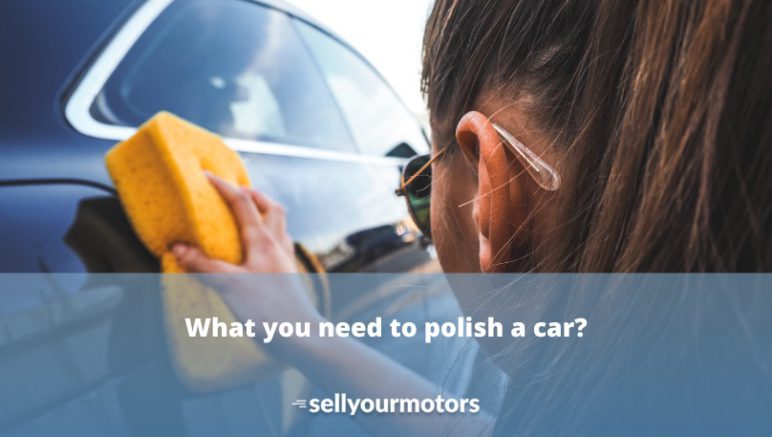Polishing your car is the final step, and it’s just as important as the other steps. The last step may seem boring, but trust us—it really isn’t. Polishing your car is a cleaning process that will bring out the true beauty of your vehicle and only help protect it from future scratches. If you’re ready to give it a go, follow along for our comprehensive guide to know what you need to polish your car.
What does polishing do?
Polishing restores a car’s factory-applied wax layer by removing paint specks and swirl marks as well as restoring shine and clarity. This process is great for protecting a car’s paint finish with little to no effort. Most polishes are designed to remove dust, dirt, and fingerprints that can cause scratches and swirl marks on the paint. This can be especially helpful if a customer requests a detail on a new car that they don’t plan to drive right away. Polishing also helps protect cars against future scratches by removing the microscopic loose particles of paint on a car’s finish. This can be especially helpful if you’re planning on selling your car and want to protect the paint finish. Polishing also restores the gloss and clarity to paint and can remove harmful oxidation in certain conditions.
What type of polishing equipment do you need?
Depending on the type of car you’re polishing, you may only require a basic polishing pad, a rotary polisher, and neutral cleaning solution. If you’re applying a wax or sealant, you may require a specific pad for that product. We’ll go over what pads you need for each step below. When it comes to polishing pads, there are different types for different purposes. For polishing purposes, we’ll be using polish polishing pads. These are different from buffer polishing pads and rotary polishing pads. Buffer pads are generally used to polish cars while they’re on a foam pad. For example, you can polish your car while it’s on a foam pad on a workbench. Rotary polishing pads are designed for polishing a car’s paint finish with a rotary polisher. Finally, a rotary buffer is a great combination of a rotary polisher and polishing pad for both polishing and buffing.
Types of Polish for Cars
Plain – Fresh, clean paint.
Basic – A basic polish removes dirt, dust, and marks from a car’s paint finish while leaving it with a high level of clarity. Some basic polishes also come with a shine enhancer that makes the paint look wet and new.
Perfection – Perfection polishes are designed to restore a car’s paint finish by removing paint defects, such as oxidation and swirl marks. Many perfection polishes also come with a sealant or wax in order to protect a car’s finish.
Gloss – Gloss polishes are designed to restore a car’s paint finish by boosting the gloss and clarity.
How to polish a car?
Prepping the Paint Before you start polishing a car, we recommend first prepping the paint to get rid of any dirt, dust, and debris that could scratch the paint finish. To prep the paint, simply vacuum off any excess dust, dirt, and cleaning solution with a shop vacuum. If the paint is overly dirty, you may need to do this step twice to be thorough. Buffing the Paint After the paint is prepped, it’s time to start buffing.
What you need to polish a car: Final Words
Polishing is a simple, yet essential, step in the car detailing process. By buffing the paint, you can remove any swirl marks and haze that may develop in the future. You can also polish your car to regain the shine and clarity lost in the buffing process. If you haven’t polished your car in a while, it’s important to remember that a car will change with age. Polishing your car will help maintain the beauty of the vehicle’s finish and protect it from future scratches.
Sell Your Motors
Car buying specialists are your best bet when you want to sell your car fast for a fair price. At Sell Your Motors we pride ourselves for being transparent and completing the whole car buying process in only 30 minutes!







